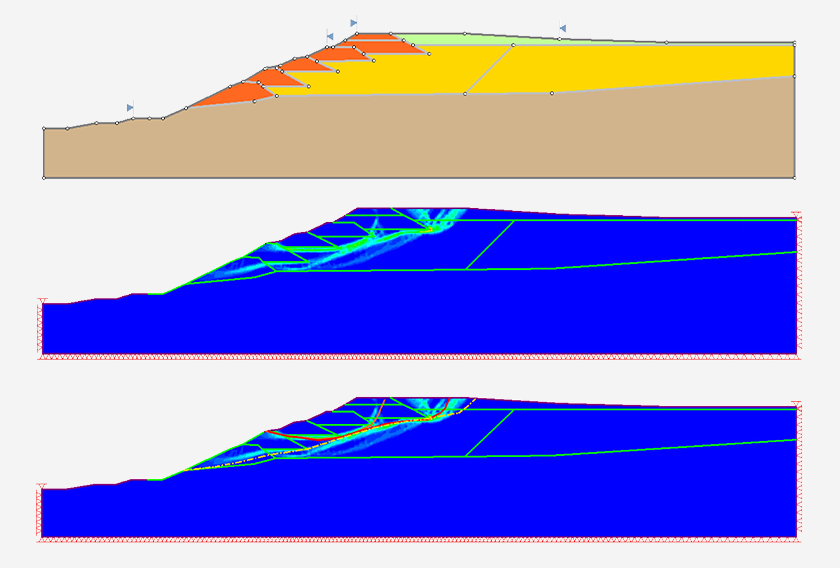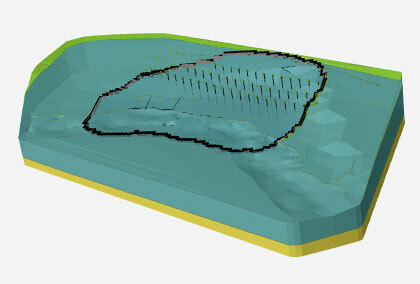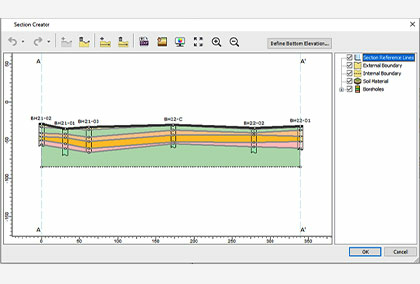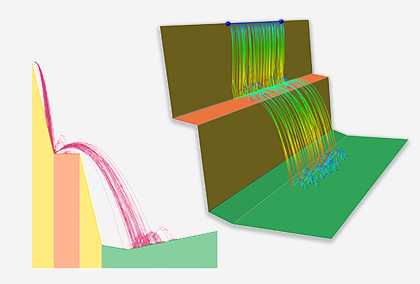The Definitive Guide to Rocscience’s Geotechnical Software Integrations
How do integrations help you with your geotechnical analysis?
Civil and mining engineers have always relied on innovative geotechnical solutions for their complex analyses. Using multiple programs can help provide the comprehensive insight needed, however, this often creates the need to switch between programs and manually transfer data. This is where integrations come into the spotlight.
Since the onset of Rocscience’s journey, our focus has been creating innovative tools that are reliable, easy to use, and help you be more efficient. We understand the day-to-day challenges you face using multiple programs. Because of this, developing integrations between our programs, allowing them to better communicate with one another, has been a major driving force behind to provide you with a more collaborative and efficient workflow.
By utilizing the integrations throughout our product line, you can easily transfer information between programs, get a more in-depth understanding of your material behavior and properties, and perform analyses in two and three dimensions more efficiently.
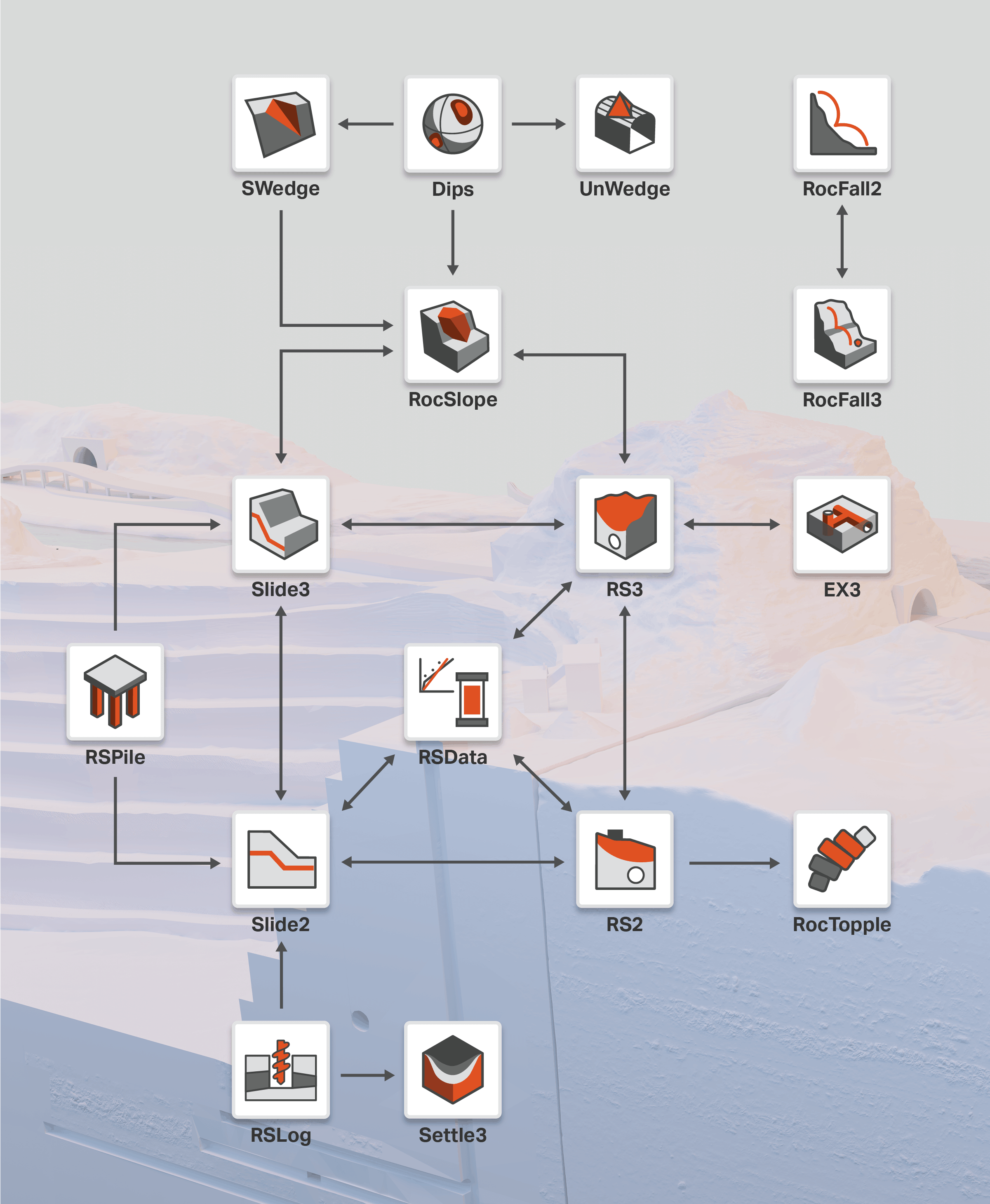
Rocscience Program Integrations
Slide2 & Slide3
Integration between these two industry-leading limit equilibrium tools has led the way for performing advanced 2D and 3D analyses of all types of soil and rock slopes, embankments, earth dams, retaining walls, and more.
Import and run your Slide2 model into Slide3, extrude it and analyze the 3D effects. As an alternative, you can easily create 2D sections within your Slide3 model and compute them with the Slide2 engine. View the Slide2 and Slide3 results on the same model for seamless comparison.
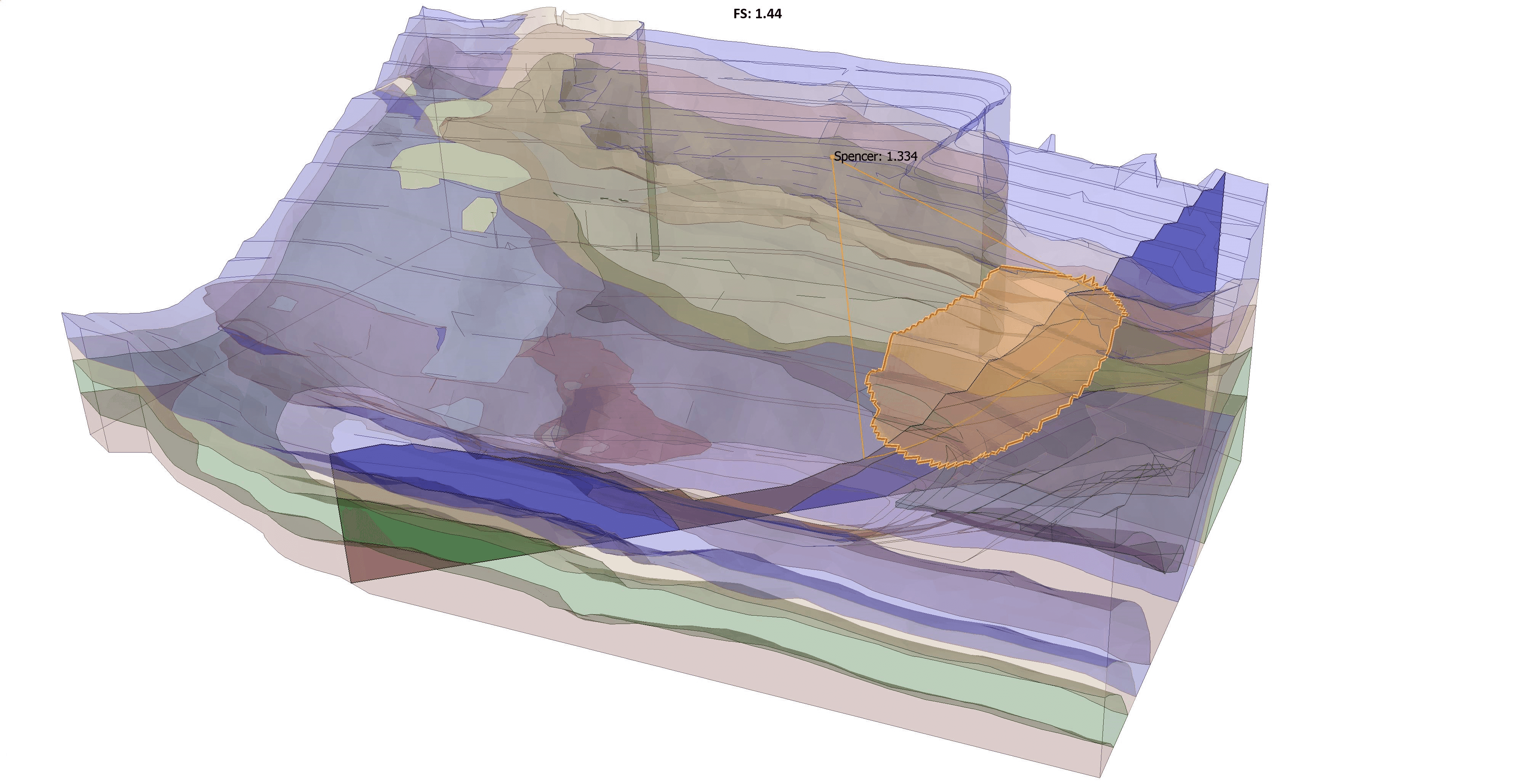
Key Advantage
Taking advantage of this integration, you can get a more in-depth analysis of your models and compare the results of your 2D and 3D analyses faster than ever.
Slide2 & RS2
Using Slide2 with RS2 provides a powerful verification process. With a shared material library and the ability to seamlessly transition your 2D models between programs, you can save time running your analyses and directly compare your Limit Equilibrium (LE) and Finite Element (FE) results.

Key Advantage
By comparing results side by side, you can verify the simulations against each other and ensure the accuracy of your analysis results.
Slide2 & RSPile
Importing your RSPile file into Slide2 provides more comprehensive support capabilities for your slope stability analyses, making the whole process of integrating piles more efficient. Moreover, you have full flexibility to model various pile designs in RSPile and analyze their responses under various loads before using them in your Slide2 models.

Key Advantage
Benefit from the valuable insights of your piles created in RSPile in your Slide2 analyses.
Slide2 & RSLog
RSLog and Slide2 are now integrated, allowing you to easily import your cross-sections online or offline directly from your RSLog account into Slide2, saving you time.
Key Advantage
Define your cross-section in RSLog using the test hole data you have already logged, and seamlessly import that cross-section into Slide2.
RSData - Slide2, Slide3, RS2, RS3
RSData streamlines your workflow by integrating with some of the major Rocscience programs: Slide2, Slide3, RS2, and RS3. Seamlessly import your material strength properties directly from RSData into these 2D or 3D programs for numerical analysis. This way you’re able to save time and avoid manual data entry.
Key Advantage
Understanding and calibrating material properties is the key to performing a successful analysis. This integration gets you to your results faster.
Slide3 & RS3
Built on the same underlying geometry, Slide3, and RS3 have the ability to read the same model files. For more in-depth analysis, RS3 models can also be created directly from Slide3 models. Further, these programs can compare LE and FE results.
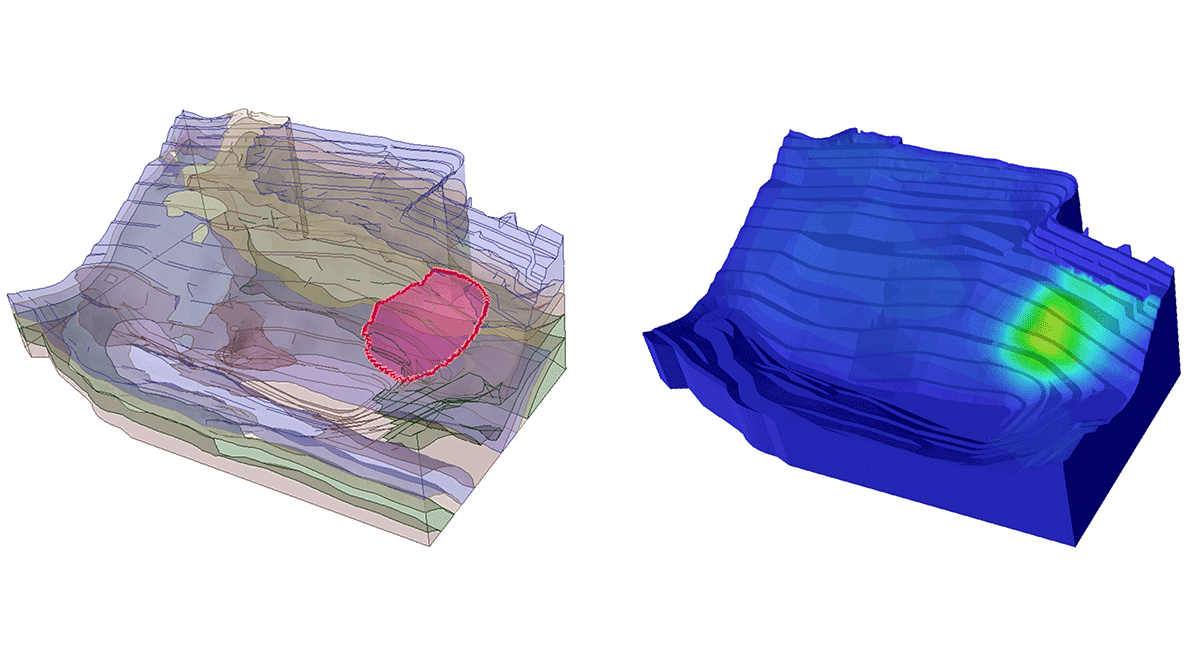
Key Advantage
The Slide3 and RS3 integration allows you to not only perform the most in-depth slope stability analysis but makes it convenient for you to compare Slide3 and RS3 results for verification of failure mechanism and accuracy of factor of safety.
Slide3 & RSPile
The powerful integration between Slide3 and RSPile has streamlined incorporating piles from RSPile into your Slide3 analyses. This one-of-a-kind integration allows you to use piles created in RSPile and then add them into Slide3 as a Support Type. Perform pre-analysis of the piles, straight from the Slide3 interface.
Key Advantage
The integration between Slide3 and RSPile allows you to take full advantage of enhanced support capabilities when using piles.
RS2 & RS3
Integration between RS2 and RS3 helps optimize your time by providing an easy transition between 2D and 3D finite element analysis. Import your RS2 models directly into RS3 for more in-depth 3D analysis. Use the Section Creator tool to export a cut of your 3D model to quickly analyze critical sections in RS2.
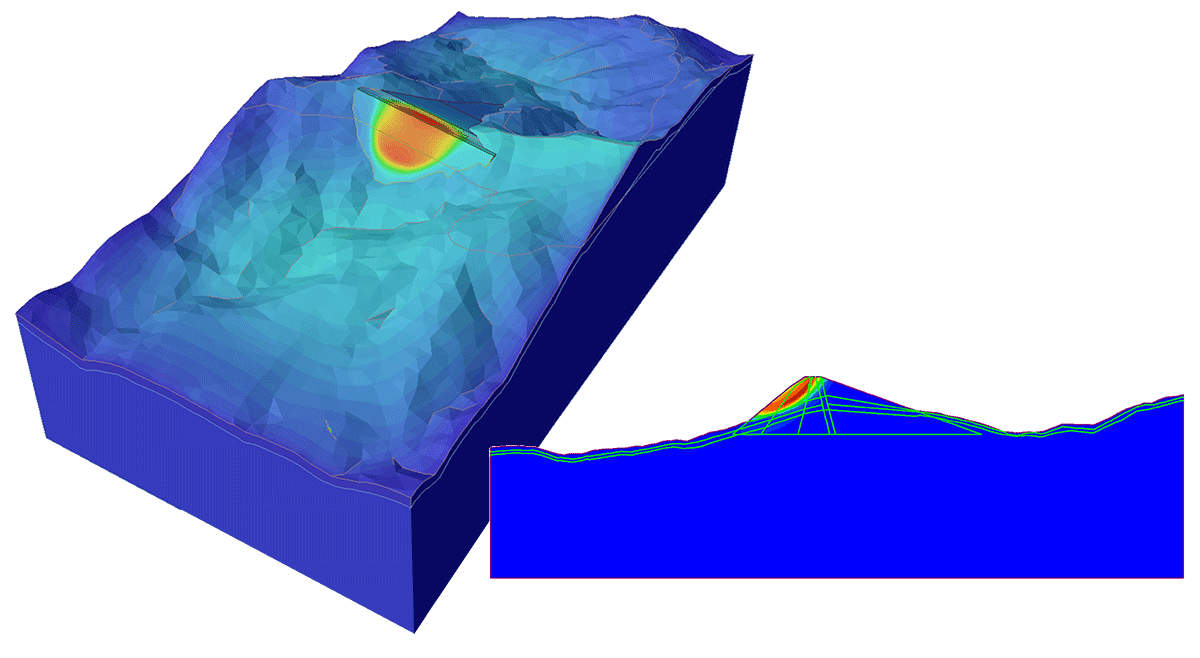
Key Advantage
Achieve easy transition between 2D and 3D models and get the best results for your Finite Element analysis.
RS2 & RocTopple
The 2D Finite Element Analysis program RS2 seamlessly integrates with RocTopple, Toppling Stability Analysis software for slopes. Now, you can effortlessly export your slope and blocks geometry from RocTopple as a DFX file and import it into RS2 for running advanced analysis using the Finite Element Method.
Key Advantage
Efficiently examine and verify the failure mechanism and support forces in slopes while getting more in-depth insights for your analyses at the same time.
EX3 & RS3
EX3 provides a quick analysis of underground mining and tunnel excavations. For projects that need more in-depth analysis, you can import your EX3 models directly into RS3, convert your geometry, assign materials, field stress, and regions of interest for a hassle-free computation.
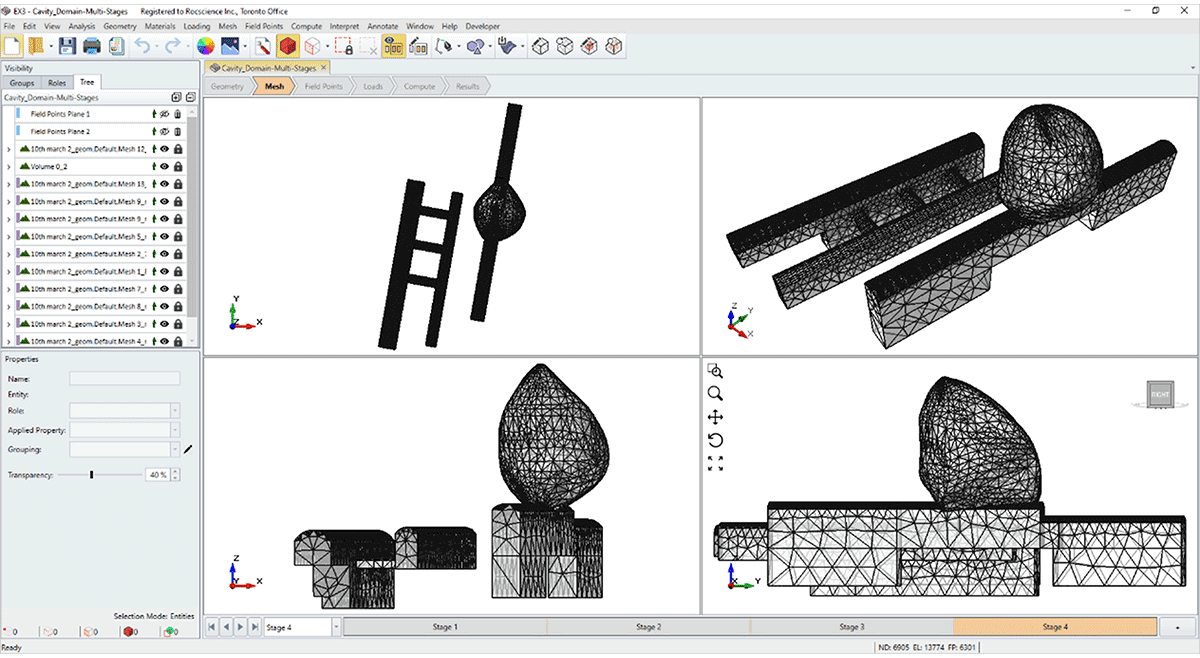
Key Advantage
For complex underground excavations, the EX3 and RS3 integration will streamline your analysis and provide you with detailed insights into your projects.
Settle3 & RSLog
The integration between Settle3 and Rocscience’s brand-new web-based borehole management application RSLog allows you to avoid the manual process of borehole data entry.
Easily import your borehole log data into Settle3 through an intuitive import wizard so you can get to your settlement analysis faster.
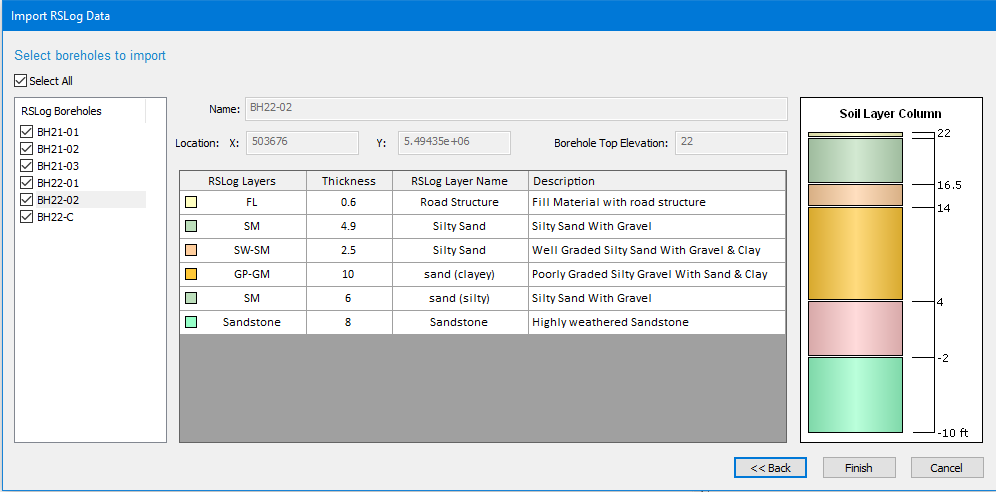
Key Advantage
This integration will not only save you time spent on manual data entry but also ensure that the transferred data is error-free.
Dips & SWedge
With the Dips and SWedge integration, you can now easily transform your raw orientation data into Dip and Dip Direction format for import into SWedge. Identify critical discontinuities, joint sets, and kinematic properties with Dips to be further analyzed in SWedge.
Key Advantage
In a matter of seconds, identify critical joint orientations and slope kinematics for further analysis.
Dips & UnWedge
The integration between these two programs allows you to import orientation data and set statistics from Dips into UnWedge for Deterministic, or Probabilistic Analysis. Directly import Fisher K set statistics into UnWedge for sampling Dip/Dip Direction of joints in a Probabilistic Analysis.
By transferring and assigning statistical distributions to your orientation data from Dips to UnWedge, obtain the probability of failure for your rock models faster. Model variability in joint orientation and strength, water pressure, field stress, and supports.
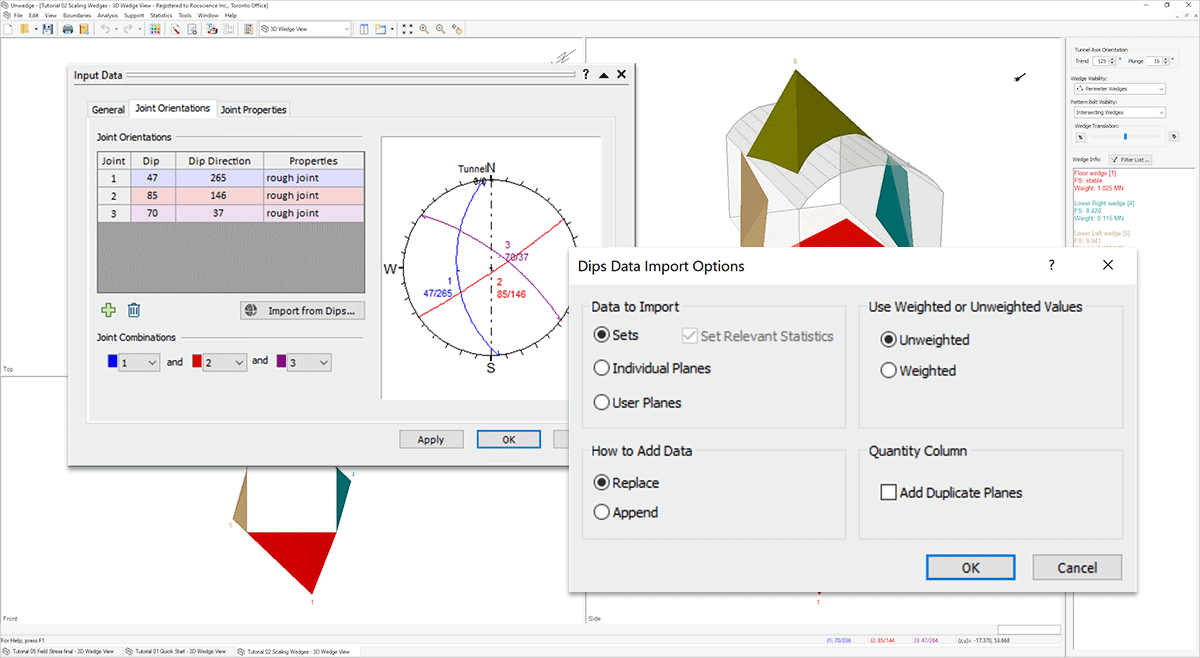
Key Advantage
Save time with your underground tunnel excavation stability analyses with this integration. Instantly import joint orientations and set statistics for a variety of analysis types.
Dips & RocSlope3
This integration is designed to streamline your geotechnical analysis process and provide you with a comprehensive solution for structurally-controlled slope stability assessment and risk management. The Dips integration with RocSlope3 offers enhanced workflow efficiency to easily import geological structural data directly from Dips to RocSlope3 to build your model.
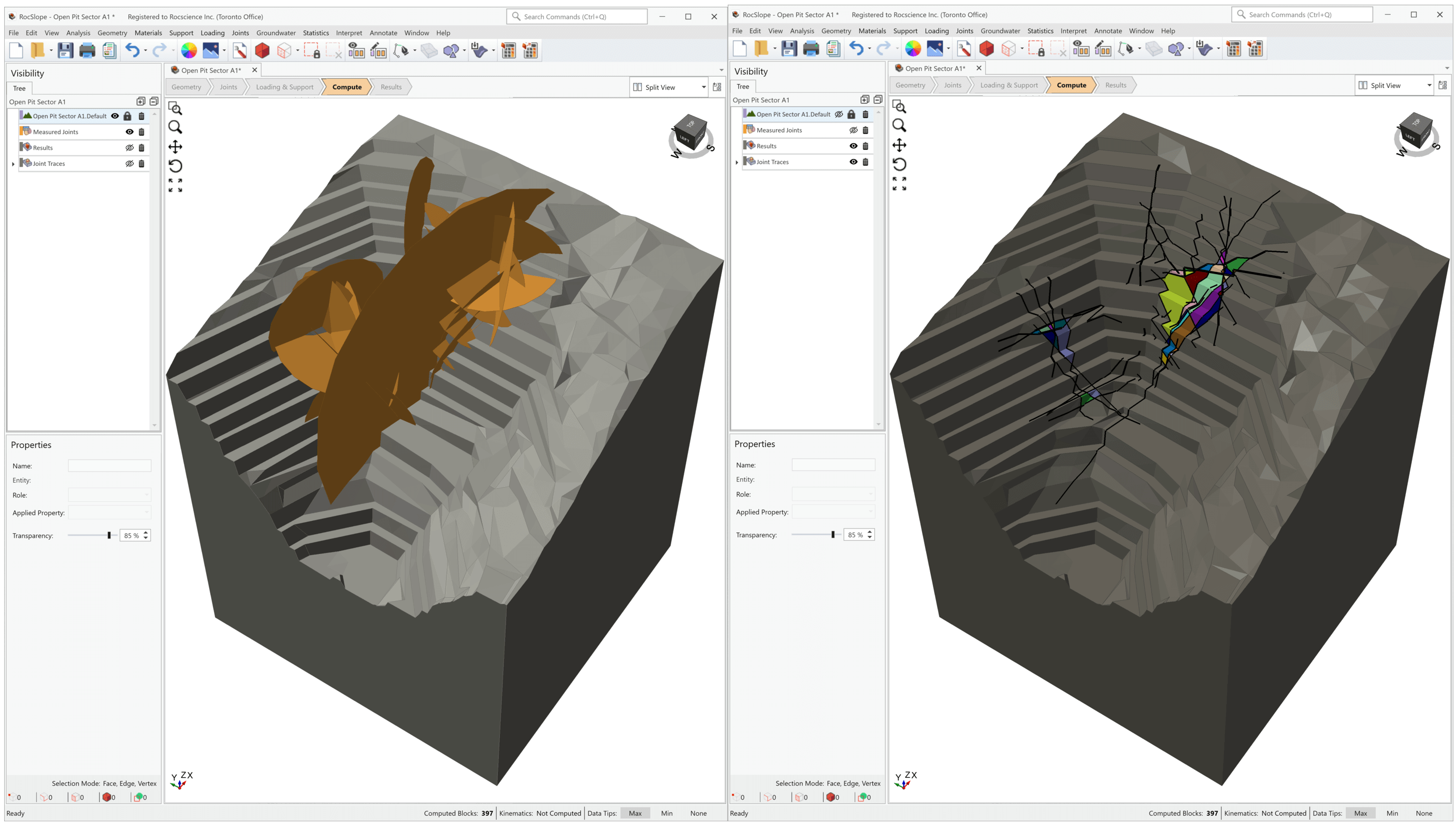
RocSlope3 & SWedge
With this integration, you can import geometry, properties, and joints from your SWedge model to full define the model. These programs work well in tandem as SWedge provides the speed of analyzing individual wedges while RocSlope3 gives you a comprehensive look at global stability of structurally-controlled failures.
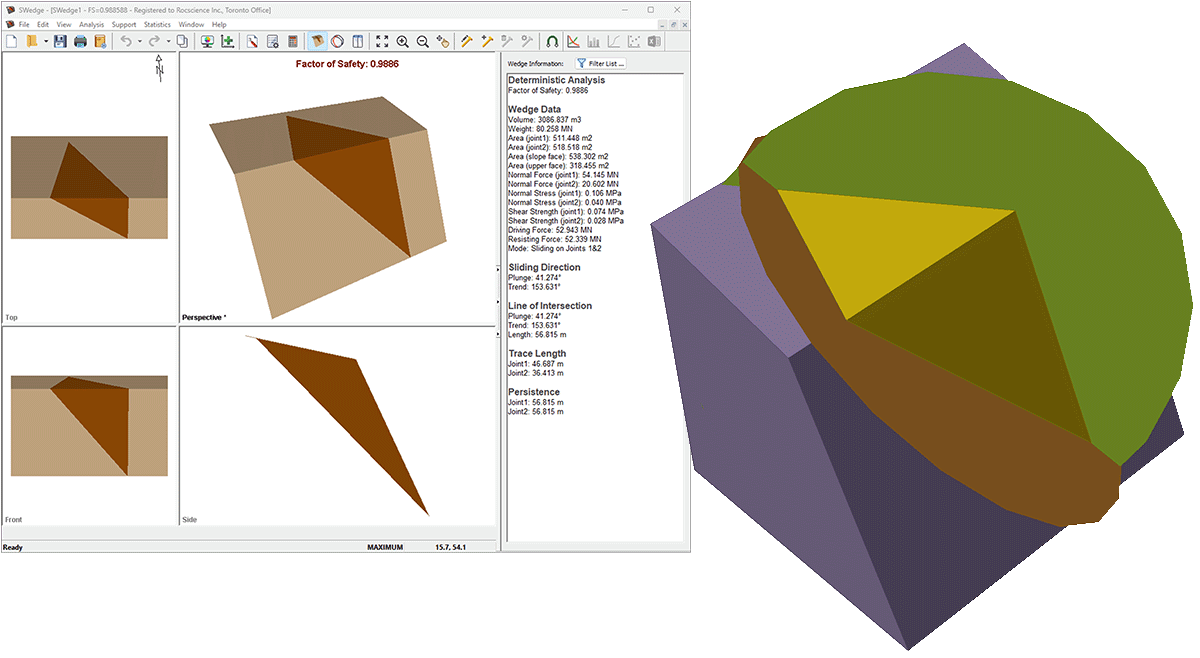
RocSlope3 & Slide3, RS3
Avoid duplicate model creation by directly importing geometry, material properties, groundwater conditions and bolts from your Slide3 or RS3 models. All that's left is to add joints to complete the model and run your analysis.

RocFall2 & RocFall3
The powerful 2D statistical program RocFall2 now integrating with its 3D counterpart RocFall3 brings more advanced capabilities to you. This state-of-the-art integration allows you to import models with extruded 2D geometry from RocFall2 into RocFall3 and easily create a 3D model. You can also define a 2D section within a full 3D model in RocFall3 and export it to RocFall2 with predefined materials and parameters to seamlessly run a 2D analysis.
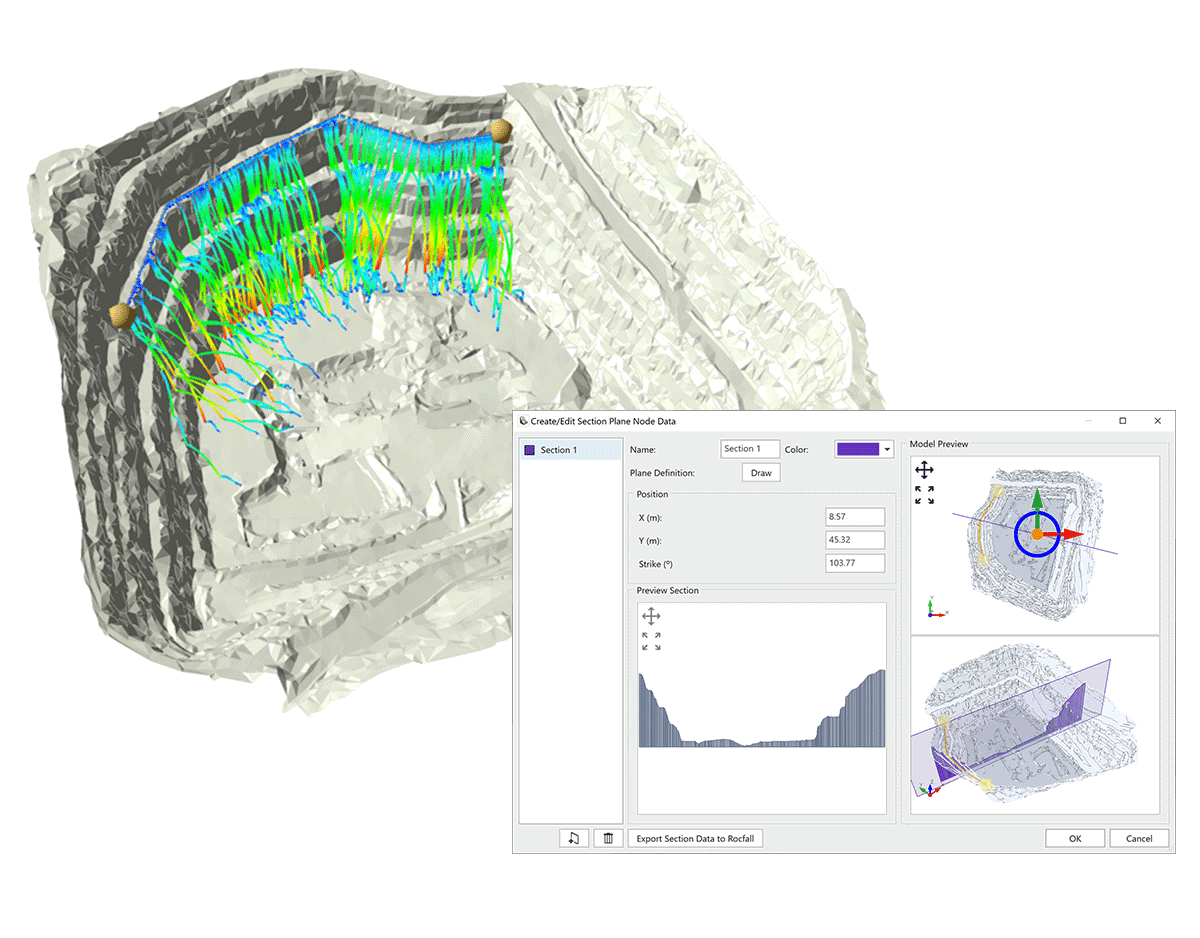
Key Advantage
Taking advantage of this integration, you can easily compare the results between 2D and 3D analyses, allowing more flexibility and ease in the verification of your rock fall analyses.
How can geotechnical software integrations benefit you?
In an industry where time and money are important considerations, connecting Rocscience’s versatile suite of programs can enhance your productivity, reduce project delivery time, and simplify your workflow.
